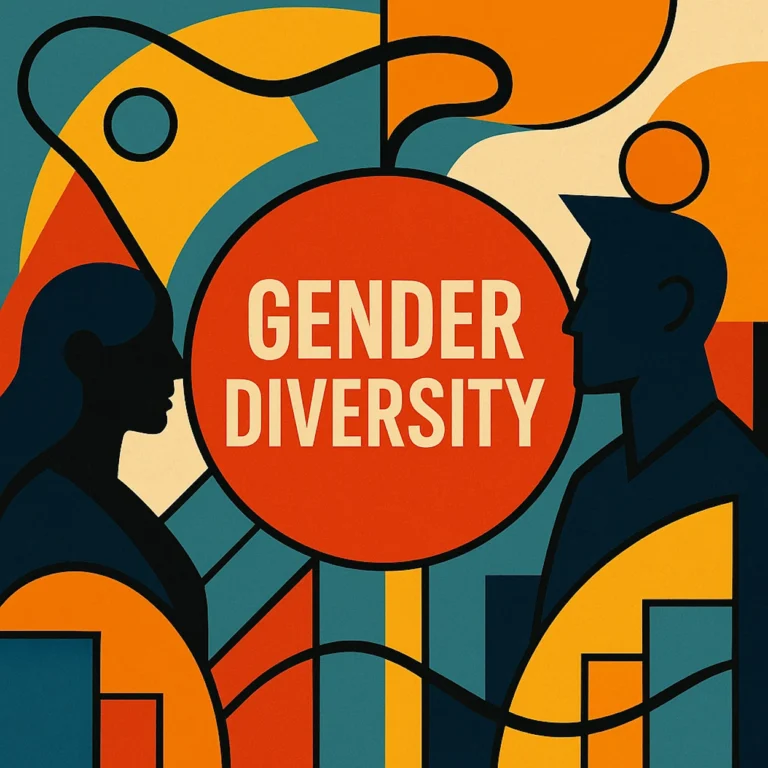This paper explores the role of PPC (Pay-Per-Click) advertising in social media marketing, highlighting its necessity and effectiveness in driving traffic, engagement, and conversions. While SEO (Search Engine Optimisation) is highly effective for search engine visibility, it does not directly apply to social media platforms. This paper examines how PPC fills this gap by providing targeted advertising opportunities on social media, utilising current best practices and supported by relevant data.
Introduction – PPC Advertising on Social Media
In the realm of digital marketing, SEO and PPC are often discussed in terms of their effectiveness in driving website traffic and visibility. While SEO focuses on organic search results, it does not apply to social media platforms. Social media relies heavily on algorithms that prioritise content based on user engagement rather than search engine criteria. This paper argues that PPC is indispensable for social media marketing, providing a way to reach and engage audiences effectively.
Literature Review
The Unique Nature of Social Media Algorithms
Social media platforms like Facebook, Instagram, and Twitter use complex algorithms to deliver content to users. These algorithms prioritise posts based on engagement metrics such as likes, shares, and comments, rather than search engine criteria (Facebook, 2023). As a result, SEO techniques are not directly applicable to social media marketing.
PPC in Social Media Marketing
PPC advertising on social media allows businesses to target specific audiences based on demographics, interests, and behaviors (Facebook Ads Manager, 2023). This precision targeting can lead to higher engagement rates and conversions compared to organic reach, which is often limited by algorithmic changes and competition for visibility (Hootsuite, 2023).
Effectiveness of PPC on Social Media
Studies show that PPC campaigns on social media can significantly increase brand awareness, drive traffic to websites, and boost sales. For example, Facebook ads can achieve a return on investment (ROI) of up to 10:1, making them highly cost-effective (WordStream, 2023). Additionally, social media PPC allows for real-time tracking and optimisation, ensuring that campaigns can be adjusted for maximum effectiveness (HubSpot, 2023).
Analysis
Targeting and Reach
PPC on social media enables businesses to reach highly specific audiences. This targeted approach ensures that ads are seen by users who are more likely to be interested in the products or services offered. Unlike SEO, which relies on users searching for relevant terms, social media PPC proactively places ads in front of potential customers (Facebook Ads Manager, 2023).
Engagement and Conversion
PPC ads on social media are designed to drive user engagement. Features such as interactive ads, carousel posts, and video content can capture user attention and encourage interactions. These engagements can lead to higher conversion rates as users are more likely to click through and take action (Hootsuite, 2023).
Analytics and Optimisation
Social media PPC platforms provide detailed analytics that allow businesses to monitor the performance of their ads in real-time. This data can be used to optimise campaigns, adjusting targeting, ad creatives, and budgets to improve results. This level of control and adaptability is a significant advantage over traditional SEO methods (HubSpot, 2023).
Discussion
Scenarios Where PPC is Essential
While SEO is invaluable for search engine visibility, PPC is essential for social media marketing in several scenarios:
- Brand Awareness Campaigns: PPC can quickly increase brand visibility and awareness on social media, reaching a large audience in a short amount of time (WordStream, 2023).
- Product Launches: New products can benefit from the immediate reach and engagement provided by social media PPC, driving initial sales and interest (Facebook Ads Manager, 2023).
- Retargeting Campaigns: PPC allows businesses to retarget users who have previously interacted with their brand, increasing the chances of conversion (Hootsuite, 2023).
Counterpoints and Rebuttals
While some may argue that organic social media strategies can be effective, the reach and engagement of organic posts are often limited by platform algorithms. PPC provides a way to bypass these limitations, ensuring that ads reach the desired audience. Additionally, the ability to track and optimise PPC campaigns in real-time offers a level of control and precision that organic strategies cannot match (HubSpot, 2023).
Conclusion
PPC advertising is essential for effective social media marketing. While SEO is highly effective for search engine visibility, it does not apply to social media platforms. PPC fills this gap by providing targeted, engaging, and trackable advertising opportunities. For businesses looking to maximise their social media presence, PPC offers a powerful tool to drive traffic, engagement, and conversions.
References
- Facebook. (2023). Understanding the Facebook Algorithm. Retrieved from https://www.facebook.com/business/learn/lessons/understanding-the-facebook-algorithm
- Facebook Ads Manager. (2023). How to Create Effective Ads on Facebook. Retrieved from https://www.facebook.com/business/ads/ad-manager
- Hootsuite. (2023). The Complete Guide to Social Media Advertising. Retrieved from https://blog.hootsuite.com/social-media-advertising/
- HubSpot. (2023). Social Media Advertising: The Ultimate Guide. Retrieved from https://blog.hubspot.com/marketing/social-media-advertising
- WordStream. (2023). The Importance of Social Media PPC. Retrieved from https://www.wordstream.com/social-media-ppc
In conclusion, while SEO remains a cornerstone of search engine marketing, PPC is crucial for maximising the reach and effectiveness of social media marketing efforts. Contact Tim today to discuss SEO and PPC options for your business. Otherwise here is a comprehensive guide to using PPC for social media.
PPC Advertising on Social Media
Appendix: Comprehensive Guide to Using PPC for Social Media Marketing
This appendix provides a detailed guide on how to effectively utilise PPC (Pay-Per-Click) advertising for social media marketing. It covers the setup process, best practices, optimisation techniques, and tools for tracking and analysing campaign performance.
A. Setting Up a PPC Campaign
1. Define Your Goals
- Identify the primary objective of your campaign (e.g., brand awareness, lead generation, sales).
- Set specific, measurable, achievable, relevant, and time-bound (SMART) goals.
2. Choose the Right Platform
- Determine which social media platforms your target audience uses most frequently.
- Popular platforms include Facebook, Instagram, Twitter, LinkedIn, and TikTok.
3. Create an Advertising Account
- Sign up for an advertising account on the chosen platform (e.g., Facebook Ads Manager, Twitter Ads, LinkedIn Campaign Manager).
- Provide necessary information, including billing details.
4. Set Your Budget
- Decide on a daily or lifetime budget for your campaign.
- Allocate budget based on your goals and the cost of reaching your target audience.
5. Define Your Target Audience
- Use demographic, geographic, behavioral, and interest-based criteria to narrow down your audience.
- Consider creating custom audiences using existing customer data or website visitors.
6. Choose Your Ad Format
- Select the ad format that best suits your campaign goals (e.g., image ads, video ads, carousel ads, slideshow ads).
- Ensure the format is compatible with the chosen platform including current best sizes.
7. Create Your Ad Content
- Design visually appealing and engaging ad creatives.
- Write compelling ad copy that includes a clear call to action (CTA).
8. Set Up Tracking and Analytics
- Install the necessary tracking pixels (e.g., Facebook Pixel, LinkedIn Insight Tag) on your website.
- Ensure tracking is set up to monitor conversions and other key performance indicators (KPIs).
B. Best Practices for PPC Advertising Campaigns
1. A/B Testing
- Run A/B tests on different ad creatives, copy, and targeting options to determine the most effective combinations.
- Continuously test and refine your ads based on performance data.
2. Use Lookalike Audiences
- Create lookalike audiences based on your existing customer base to reach new potential customers who share similar characteristics.
3. Optimise Ad Scheduling
- Schedule ads to run at times when your target audience is most active on social media.
- Use platform insights to determine peak engagement times.
4. Monitor and Adjust Bids
- Regularly monitor your bid strategy and adjust bids to maximise ROI.
- Use automated bidding options if available to optimise bid management.
5. Leverage Retargeting
- Set up retargeting campaigns to reach users who have previously interacted with your brand.
- Use dynamic ads to show personalised content based on user behavior.
C. Optimisation Techniques
1. Improve Ad Relevance
- Ensure your ads are highly relevant to your target audience to increase engagement rates and reduce costs.
- Use relevant keywords and messaging that resonate with your audience.
2. Enhance Landing Pages
- Optimise landing pages to ensure they provide a seamless and relevant user experience.
- Ensure landing pages load quickly, are mobile-friendly, and have clear CTAs.
3. Analyse Performance Metrics
- Regularly review key performance metrics such as click-through rate (CTR), conversion rate, cost per click (CPC), and return on ad spend (ROAS).
- Use insights from performance metrics to make data-driven decisions for campaign adjustments.
4. Utilise Advanced Targeting Options
- Take advantage of advanced targeting options such as geo-targeting, device targeting, and interest targeting to refine your audience.
- Use exclusion targeting to avoid showing ads to irrelevant audiences.
D. Tools for Tracking and Analysing Campaign Performance
1. Platform-Specific Tools
- Facebook Ads Manager: Provides detailed insights into ad performance, audience engagement, and conversion tracking.
- Twitter Ads: Offers analytics for tweet engagements, impressions, and campaign performance.
- LinkedIn Campaign Manager: Tracks ad performance, audience demographics, and conversion metrics.
2. Third-Party Analytics Tools
- Google Analytics: Integrates with social media platforms to track website traffic, user behavior, and conversion data.
- Hootsuite Ads: Provides comprehensive analytics and reporting for multiple social media platforms.
- Sprout Social: Offers social media analytics and insights to measure campaign effectiveness and ROI.
3. Heatmaps and User Behavior Tools
- Crazy Egg: Tracks user interactions on landing pages through heatmaps and click maps.
- Hotjar: Provides insights into user behavior on landing pages, including heatmaps, session recordings, and feedback tools.
By following these guidelines and utilising the right tools, businesses can effectively leverage PPC advertising on social media to achieve their marketing goals, enhance engagement, and drive conversions.
PPC Advertising on Social Media







Leave a Reply